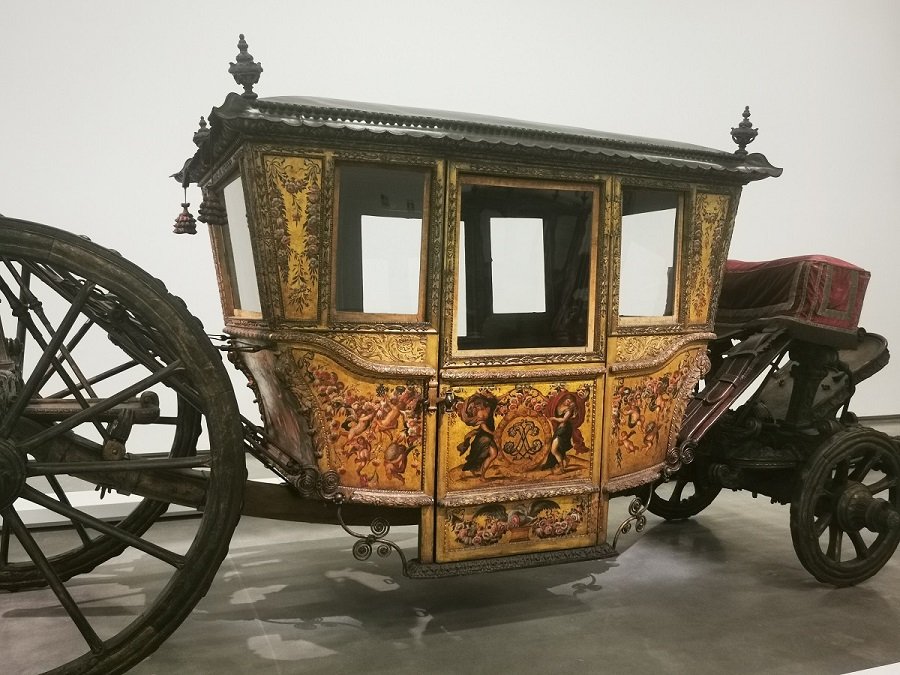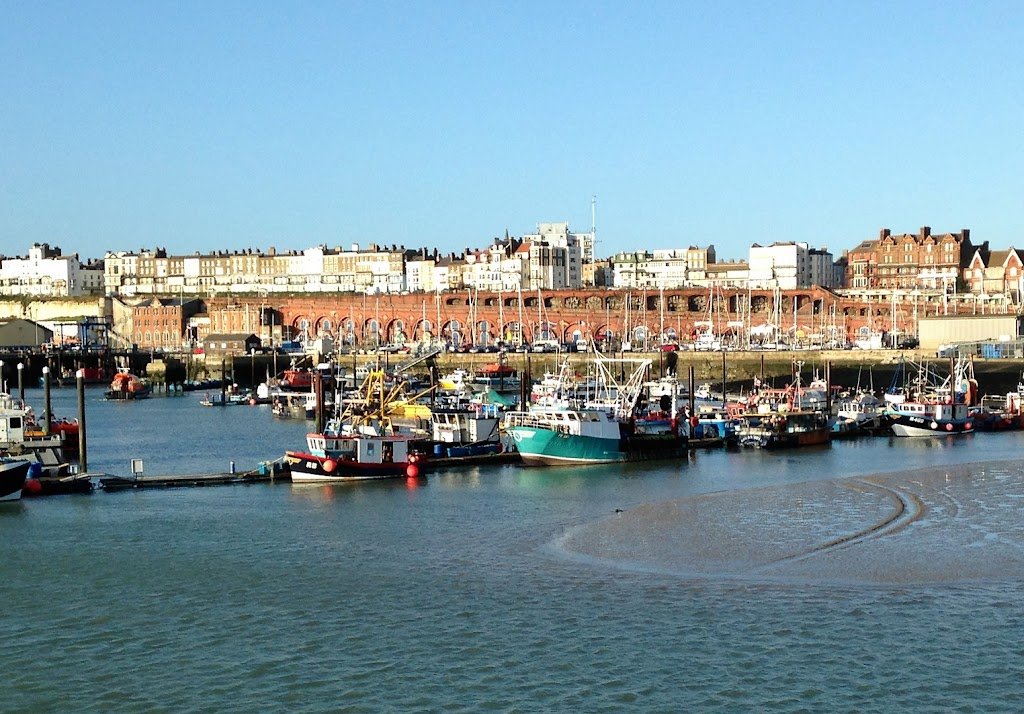The National Coach Museum (Museu dos Coches)
We came across the National Coach Museum on our first day in Lisbon, purely by chance. It was a hot day; the crowds were lined up around the block for Jeronimo’s Monastery, and we saw a sign for the coach museum. Why not?
Apparently, it is the most-visited national museum and came about through some highly fortuitous forethought. In 1905, Queen Amelia, wife of King Carlos I, thought it wise to create a museum where the royal coaches could be preserved and displayed to the public. Given that the monarchy was overthrown just five years later, she had rather good timing. And of course, after the Republic was created, there was an added influx of exhibits that were no longer going to be used. Over the years, more space was needed and in 2015, the National Coach Museum moved to a new building at its current location.
The coaches on display date back several centuries. The oldest in the collection is the carriage used by Philip of Spain on his visit to Portugal in 1619. As you walk through the museum, the coaches become increasingly elaborate with examples from the 18th century adorned with intricate carvings and gold.
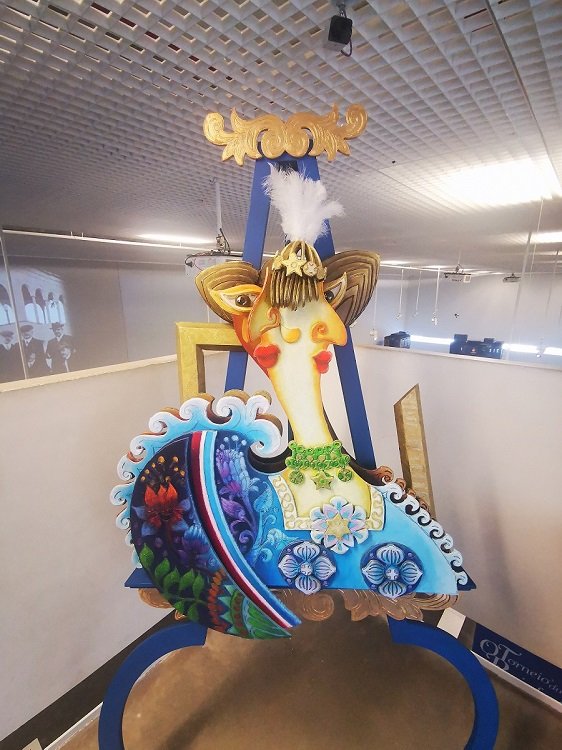
In addition to the carriages from the Royal House, the museum also displays a variety of other smaller coaches, from small sedges, designed for one person and a horse, to children’s carriages designed to be pulled by a pony, to mail coaches.
I’ll be honest: what I had expected to be a run-of-the-mill (dare I even say dull) museum was actually a stunningly rich collection, providing a fascinating glimpse into both the royal family and the skill involved in making these magnificent carriages. We spent several hours examining tiny details.
But the absolute highlight of the museum was not coach-related at all. I should say I don’t know if this is a permanent or temporary exhibit. For your enjoyment’s sake, I do hope it’s the former. Upstairs is a walkway that allows you to look down onto the main display floor, offering an alternative view of the coaches. Along one side of the walkway was one of the best art exhibitions I’ve ever seen. There were several sculptures (see the one pictured here) accompanied by a series of wonderfully bright, irreverent portraits depicting the kings and queens of Portugal. Finally, at the end of the line was a one sentence history of the royal lineage. But what a sentence.
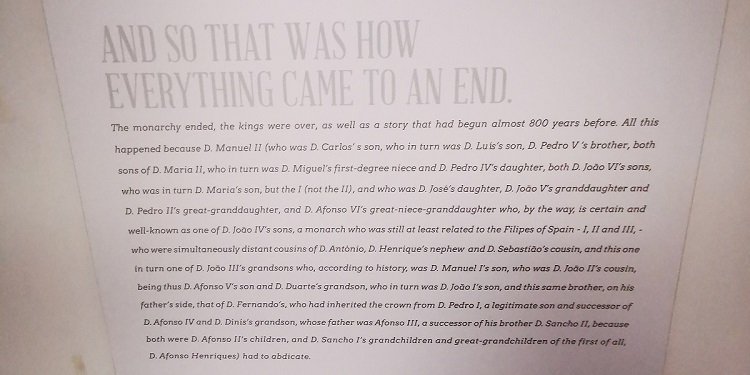
Address: Av. da Índia 136, 1300-300 Lisboa.
Hours: Tuesday through Sunday, 10-6.
The Doll Hospital and Museum (Hospital de Bonecas)
I’ve always found dolls a little creepy. I think it’s because I once knew a woman who collected expensive china dolls and every room was filled with them. There was something about their expressions that made me cringe. But, when I learned about Lisbon’s doll hospital on an episode of Travel Man, I was intrigued.

The hospital has been operating (pun intended) since 1830. A lady by the name of Carlotta would make cloth dolls. As the children played in the market square, they would sometimes tell her that their doll was ill. Carlotta would offer to heal them. The tiny store and museum is still healing dolls to this day. People bring their dolls and toys from far and wide to be mended, whether it’s replacing a lost limb or transplanting a new mop of hair. It really is quite an enchanting idea.
Downstairs is a tiny storefront selling dolls and miniature furniture for doll houses. But if you decide to tour the museum, you will head upstairs to a labyrinth of rooms filled with dolls. The hospital, where repairs are done, is lined with drawers of eyes and other materials. After that the guide will show you around cases of displays, including some of the earliest mechanical dolls, collections from around the world, and more. There are dolls representing the regions of Portugal, a collection of foreign costumed dolls, many of which bore a remarkable resemblance to ones I used to collect as a child, orphaned dolls that were never collected after surgery but who have found a new home here. It’s a fascinating space to explore.
Address: Praça da Figueira 7, 1100-240 Lisboa.
Hours: Monday to Saturday, 10:30-12:30, 3:30-5.
National Tile Museum
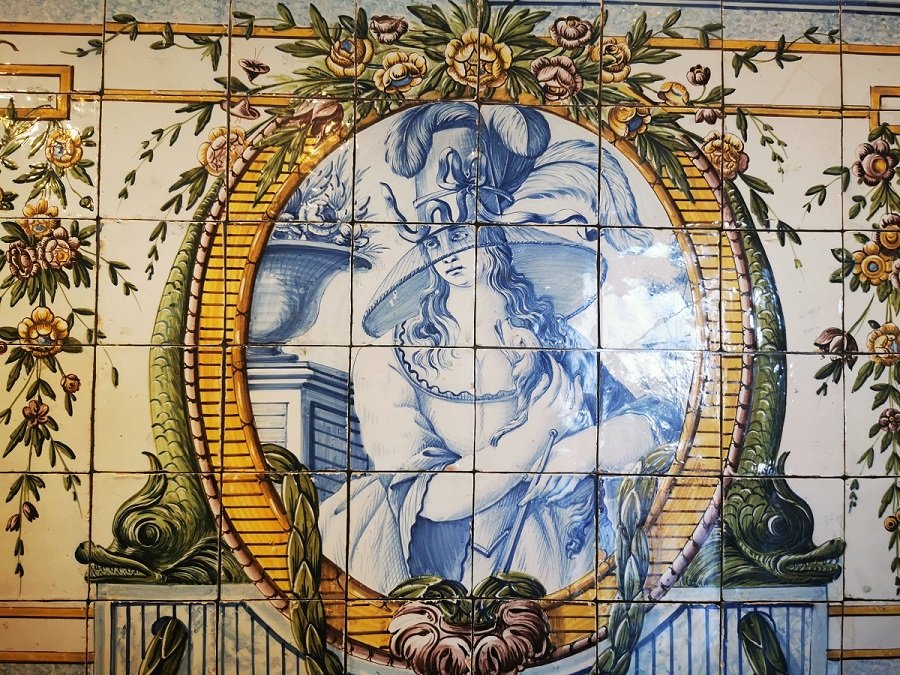
Portugal has a lengthy history of azulejo, glazed colored decorative tiles. You see them everywhere – covering the exteriors of buildings, providing a decorative accent, street signs, interior decoration. They are everywhere and they are quite beautiful. The National Tile Museum traces this artistic and practical history from the 15th century to the present day.
Adding to the beauty of the collection is the museum’s location. The building was formerly the Madre de Deus Convent, founded in 1509 by Queen Leonor. As well as viewing the impressive tile collection, visitors can also enjoy the Baroque architecture and a stunning chapel, still with original wood carvings.
The museum opened in 1965 and houses the world’s largest collection of ceramics. Learn the various tile-making processes through the ages, and see the different styles, not to mention charting a fascinating history of Portugal. The final few exhibits showcase more modern tile artistry and a lengthy tile mural depicting the entire city of Lisbon. My personal favorites are some of the early 19th-century designs. The museum is definitely worth a visit but be warned, it will make any future bathroom tiling projects seem more than a little mundane!
Address: Rua da Madre de Deus, 4, 1900-312 Lisboa.
Hours:Tuesday through Sunday, 10-6.
Interpretative Center of the History of Cod

A museum about the history of cod may not sound the most interesting, but this was top of my go-to list. As something of a food historian, I know there is much to be learned about a people and their history by looking at their eating habits. Even so, the Interpretative Center of the History of Cod had much more than I expected and, as one of the very few visitors there (which was a pity), I had plenty of time to roam by myself taking copious notes.
Don’t worry – I won’t recount the entire history here. After all, you need to go to the museum. Suffice to say, it was the role of cod in the Portuguese diet that led to major global exploration and heavy rivalry with other countries (especially Britain) to control the seas and fishing rights. You can still see historic Portuguese influences in Newfoundland.
After an intro to the history, you follow an interactive trail on a fishing voyage. The highlight for me – yes, I know I’m odd – was the chance to experience being on a tiny row boat off Greenland. You enter a tiny room, and sit in a little rowboat. It’s dark with just a few glowing auroras. Then the temperature drops. A lot. And you hear the waves start crashing as the boat rocks atop the waves.
The conditions on the fishing boats were appalling. Every spare bit of space was used for storing fish and yes, that included where the men slept. As for food, bait took priority when loading. Interestingly, National Geographic sent a journalist on a fishing campaign in the 1950s. Allan Villiers won an award for the resulting article which turned out to be heavily propagandized, ignoring the cruel conditions in favor of glamorizing the adventure of a sea voyage.
Finally, you learn about the role of cod in Portuguese cuisine, a key role that it still plays today as you will see on any restaurant menu.
A fascinating museum that covers food, history, exploration, industry, and a whole lot more, including another wonderful art collection.
Address: Terreiro do Paço – Torreão Nascente, 1100-148, Lisboa.
Hours: Open every day, 10-7.
